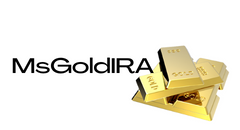
Tether's Lack of Compliance and Transparency Poses Risks to Crypto Market
JPMorgan, a global investment bank, has raised concerns about the growing risk in the crypto market attributed to Tether's lack of regulatory compliance and transparency. According to JPMorgan analysts, stablecoin issuers that adhere to existing regulations are more likely to benefit from the upcoming regulatory crackdown on stablecoins and gain a larger market share.
JPMorgan's Report Highlights Tether's Regulatory Shortcomings
In a recent report, JPMorgan highlighted the rapid expansion of Tether's USDT stablecoin as a risk to the overall crypto market. With a market capitalization of over $96 billion, USDT is currently the largest stablecoin in the world. However, JPMorgan's analysts emphasized the importance of regulatory compliance and transparency, noting that Tether falls short in comparison to its competitor Circle and its stablecoin, USDC.
The report suggests that stablecoin issuers that are more aligned with existing regulations are better positioned to benefit from the impending regulatory crackdown on stablecoins and potentially increase their market share.
Tether CEO Responds to JPMorgan's Criticism
Tether's CEO, Paolo Ardoino, responded to JPMorgan's criticism by acknowledging that Tether's dominance in the market may be seen as a negative by competitors, including those in the banking industry. However, Ardoino emphasized that Tether has always worked closely with global regulators to educate them about the technology and provide guidance on its implementation.
Tether previously faced a $41 million fine from the U.S. Commodity Futures Trading Commission (CFTC) in 2021 for misrepresenting its reserves. Since then, the company has made efforts to improve transparency by issuing quarterly attestations of its operations and finances. In 2023, Tether reported a profit of $6.2 billion.
Conclusion
JPMorgan's warning about the risks associated with Tether's lack of regulatory compliance and transparency highlights the importance of these factors in the crypto market. As regulators continue to scrutinize stablecoins, stablecoin issuers that prioritize compliance are likely to gain an advantage. It remains to be seen how Tether will navigate these challenges and whether it will be able to maintain its market dominance in the face of increasing regulatory pressure.
What are your thoughts on JPMorgan's warning and the potential risks to the crypto market? Share your opinions in the comments section below.
Frequently Asked Questions
What does a gold IRA look like?
People who wish to invest in precious metals can use Gold Ira accounts as a tax-free investment vehicle.
Physical gold bullion coin can be purchased at any time. To invest in gold, you don't need to wait for retirement.
An IRA lets you keep your gold for life. Your gold assets will not be subjected tax upon your death.
Your heirs inherit your gold without paying capital gains taxes. And because your gold remains outside of the estate, you aren't required to include it in your final estate report.
To open a Gold IRA, you'll need to first set up an Individual Retirement Account (IRA). Once you've done so, you'll be given an IRA custodian. This company acts as a middleman between you and the IRS.
Your gold IRA custodian will handle the paperwork and submit the necessary forms to the IRS. This includes filing annual returns.
After you have created your gold IRA, the only thing you need to do is purchase gold bullion. Minimum deposit is $1,000 If you make more, however, you will get a higher interest rate.
When you withdraw your gold from your IRA, you'll pay taxes on it. If you are withdrawing your entire balance, you will owe income tax plus a 10% penalty.
However, if you only take out a small percentage, you may not have to pay taxes. There are exceptions. There are some exceptions. For instance, if you take out 30% or more from your total IRA assets, federal income taxes will apply plus a 20 percent penalty.
You shouldn't take out more then 50% of your total IRA assets annually. You could end up with severe financial consequences.
How much should precious metals be included in your portfolio?
To answer this question, we must first understand what precious metals are. Precious Metals are elements that have a very high relative value to other commodities. This makes them highly valuable for both investment and trading. The most traded precious metal is gold.
There are many other precious metals, such as silver and platinum. The price of gold tends to fluctuate but generally stays at a reasonably stable level during periods of economic turmoil. It is also not affected by inflation and depression.
The general trend is for precious metals to increase in price with the overall market. However, the prices of precious metals do not always move in sync with one another. If the economy is struggling, the gold price tends to rise, while the prices for other precious metals tends to fall. This is because investors expect lower interest rates, making bonds less attractive investments.
In contrast, when the economy is strong, the opposite effect occurs. Investors favor safe assets like Treasury Bonds, and less precious metals. Since these are scarce, they become more expensive and decrease in value.
Therefore, to maximize profits from investing in precious metals, you must diversify across multiple precious metals. Because precious metals prices are subject to fluctuations, it is best to invest across multiple precious metal types, rather than focusing on one.
Is it possible to hold a gold ETF within a Roth IRA
Although a 401k plan might not provide this option, you should still consider other options like an Individual Retirement Account (IRA).
An IRA traditional allows both employees and employers to contribute. Another way to invest in publicly traded companies is through an Employee Stock Ownership Plan.
An ESOP provides tax advantages because employees share ownership of company stock and profits the business generates. The money invested in the ESOP is then taxed at lower rates than if it were held directly in the hands of the employee.
You can also get an Individual Retirement Annuity, or IRA. An IRA allows for you to make regular income payments during your life. Contributions to IRAs don't have to be taxable
What is a Precious Metal IRA, and how can you get one?
A precious metal IRA allows you to diversify your retirement savings into gold, silver, platinum, palladium, rhodium, iridium, osmium, and other rare metals. These rare metals are often called “precious” as they are very difficult to find and highly valuable. These metals are great investments and can help protect your financial future from economic instability and inflation.
Bullion is often used for precious metals. Bullion refers only to the actual metal.
Bullion can be purchased via a variety of channels including online sellers, large coin dealers, and grocery stores.
A precious metal IRA allows you to invest directly in bullion, rather than buying stock shares. This allows you to receive dividends every year.
Unlike regular IRAs, precious metal IRAs don't require paperwork or annual fees. Instead, you pay only a small percentage tax on your gains. Plus, you get free access to your funds whenever you want.
What precious metals do you have that you can invest in for your retirement?
These precious metals are among the most attractive investments. Both can be easily bought and sold, and have been around since forever. If you want to diversify your portfolio, you should consider adding them to your list.
Gold: Gold is one the oldest forms currency known to man. It is stable and very secure. Because of this, it is considered a great way of preserving wealth during times when there are uncertainties.
Silver: The popularity of silver has always been a concern for investors. It is an excellent choice for investors who wish to avoid volatility. Unlike gold, silver tends to go up instead of down.
Platinium: Platinum is another form of precious metal that's becoming increasingly popular. It's durable and resists corrosion, just like gold and silver. It's however much more costly than any of its counterparts.
Rhodium: The catalytic converters use Rhodium. It's also used in jewelry making. It is relatively affordable when compared to other types.
Palladium – Palladium is an alternative to platinum that's more common but less scarce. It's also much more affordable. For these reasons, it's become a favorite among investors looking to add precious metals to their portfolios.
How Do You Make a Withdrawal from a Precious Metal IRA?
First, decide if it is possible to withdraw funds from an IRA. Then make sure you have enough cash to cover any fees or penalties that may come with withdrawing funds from your retirement plan.
A taxable brokerage account is a better option than an IRA if you are prepared to pay a penalty for early withdrawals. If you decide to go with this option, you will need to take into account the taxes due on the amount you withdraw.
Next, calculate how much money your IRA will allow you to withdraw. The calculation is influenced by several factors such as your age at withdrawal, the length of time you have owned the account and whether or not you plan to continue contributing to retirement plans.
Once you have an idea of the amount of your total savings you wish to convert into cash you will need to decide what type of IRA you want. Traditional IRAs permit you to withdraw your funds tax-free once you turn 59 1/2. Roth IRAs have income taxes upfront, but you can access the earnings later on without paying additional taxes.
Finally, you'll need to open a brokerage account once these calculations are completed. Brokers often offer promotional offers and signup bonuses to encourage people into opening accounts. It is better to open an account with a debit than a creditcard in order to avoid any unnecessary fees.
When you do finally decide to withdraw from your precious metallic IRA, you will need a safe space where you can safely store your coins. Some storage facilities will accept bullion bars, others require you to buy individual coins. You'll have to weigh the pros of each option before you make a decision.
Bullion bars, for example, require less space as you're not dealing with individual coins. But you will have to count each coin separately. However, you can easily track the value of individual coins by storing them in separate containers.
Some prefer to store their coins in a vault. Others prefer to store their coins in a vault. Regardless of the method you prefer, ensure that your bullion is safe so that you can continue to enjoy its benefits for many years.
How Much of Your IRA Should Be Made Up Of Precious Metals
The most important thing you should know when investing in precious metals is that they are not just for wealthy people. You don't need to be rich to make an investment in precious metals. There are many ways to make money on silver and gold investments without spending too much.
You may consider buying physical coins such as bullion bars or rounds. You could also buy shares in companies that produce precious metals. Your retirement plan provider may offer an IRA rollingover program.
You will still reap the benefits of owning precious metals, regardless of which option you choose. Although they aren’t stocks, they offer the possibility for long-term gains.
Their prices rise with time, which is a different to traditional investments. This means that if you decide on selling your investment later, you'll likely get more profit than you would with traditional investing.
Statistics
- If you take distributions before hitting 59.5, you'll owe a 10% penalty on the amount withdrawn. (lendedu.com)
- Indeed, several financial advisers interviewed for this article suggest you invest 5 to 15 percent of your portfolio in gold, just in case. (aarp.org)
- If you accidentally make an improper transaction, the IRS will disallow it and count it as a withdrawal, so you would owe income tax on the item's value and, if you are younger than 59 ½, an additional 10% early withdrawal penalty. (forbes.com)
- The price of gold jumped 131 percent from late 2007 to September 2011, when it hit a high of $1,921 an ounce, according to the World Gold Council. (aarp.org)
- Contribution limits$6,000 (49 and under) $7,000 (50 and up)$6,000 (49 and under) $7,000 (50 and up)$58,000 or 25% of your annual compensation (whichever is smaller) (lendedu.com)
External Links
law.cornell.edu
- 7 U.S. Code SS7 – Designation Boards of Trade as Contract Markets
- 26 U.S. Code SS 408 – Individual retirement accounts














